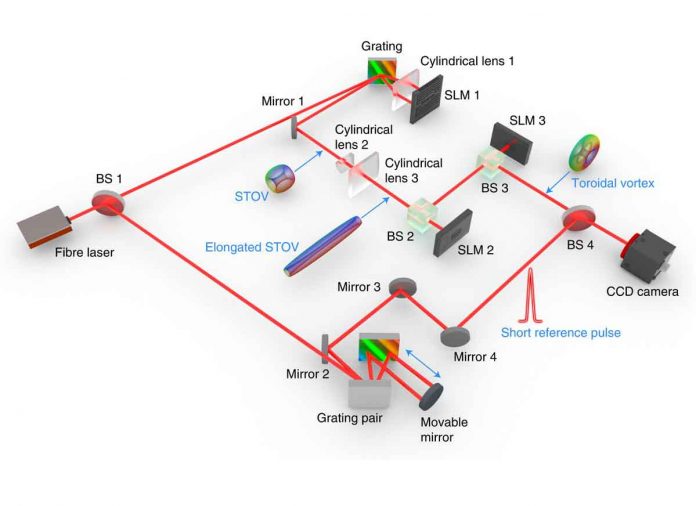Using mirrors, lasers, and lenses, a team of researchers from the University of Shanghai for Science and Technology and the University of Dayton created a method for bending light into a vortex ring. The scientists relied on previous work by other teams in which vortex rings were discovered by chance and then theoretically created a system that could manufacture them on command in their study, which was published in the journal Nature Photonics.
Another group of researchers observed in 2016 that intense light pulses whirling around a core pipe-shaped pulse might sometimes form into a donut-shaped vortex under the correct conditions. The discovery piqued the researchers’ interest, and they began to question if it may be possible to construct such vortex rings on demand with this new effort.
They began by looking at the qualities and situations that led to the formations seen by the team in 2016, and then applied mathematics to the problem. They discovered answers that looked to demonstrate how such rings could be made—in particular, they discovered that solutions to Maxwell’s equations could be utilised to construct the type of conformal mapping necessary.
The researchers put developed a set of materials that would allow their math solutions to be implemented in the real world. They began by adapting a common laser to produce a certain type of pulse. For the pulses to flow through, they added mirrors, lenses, gratings, and particular sorts of liquid crystal screens. Each component had a distinct effect on the light.
The technology initially altered the light pulses into a long, narrow shape, giving other components of the light something to swirl around, according to the researchers. After the other light had passed through the system, the spinning light united to form a ring, much like the winds in a tornado.
The researchers intend to continue their research in order to see if different vortex configurations may be created. They say their research could serve as a model for those who want to learn more about how toroidal vortices emerge naturally.

